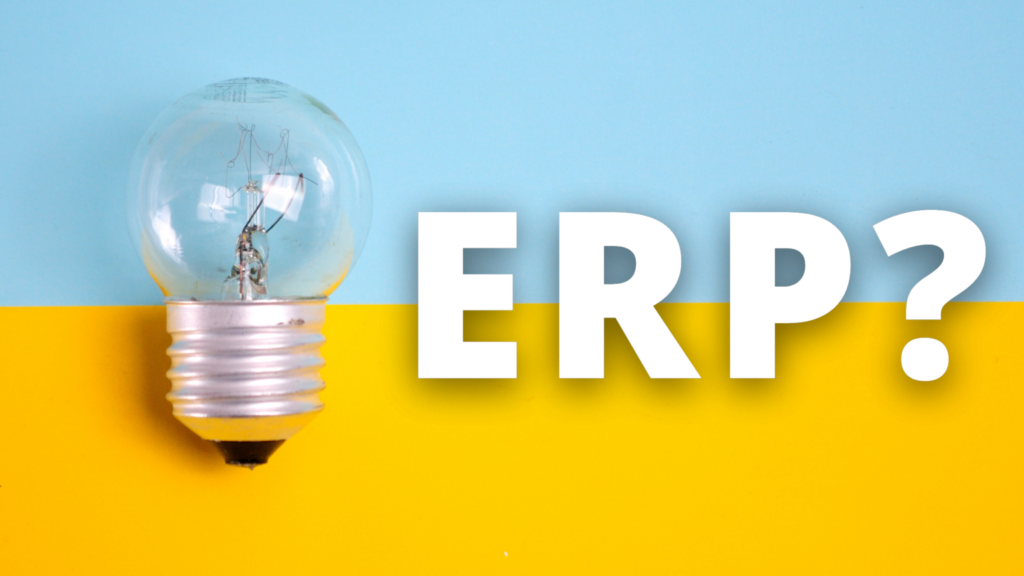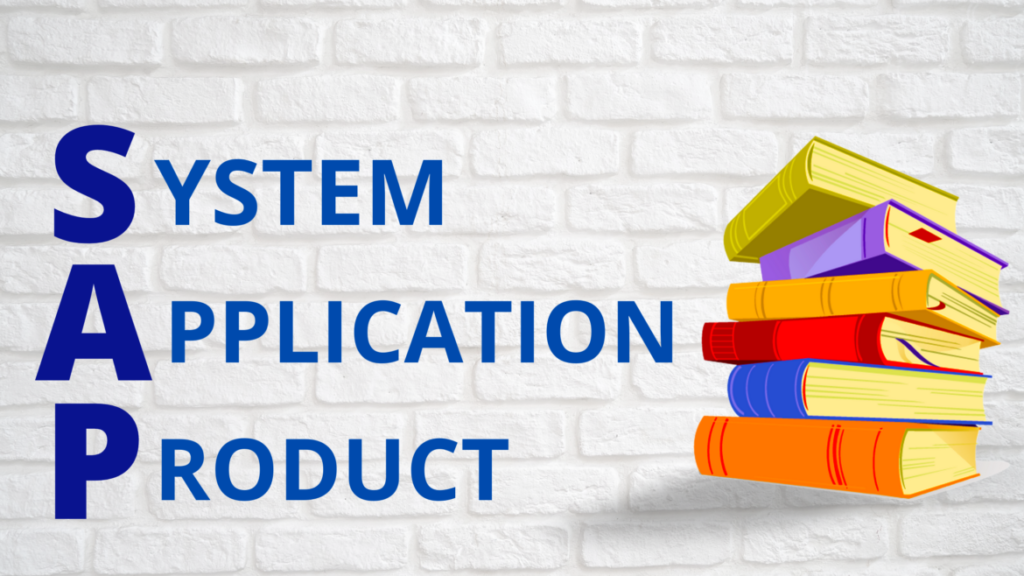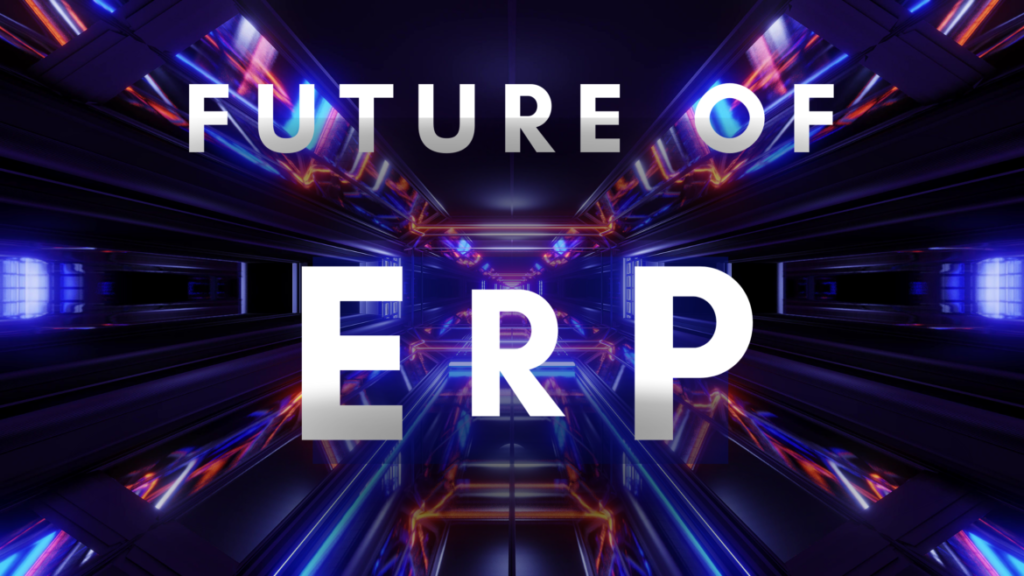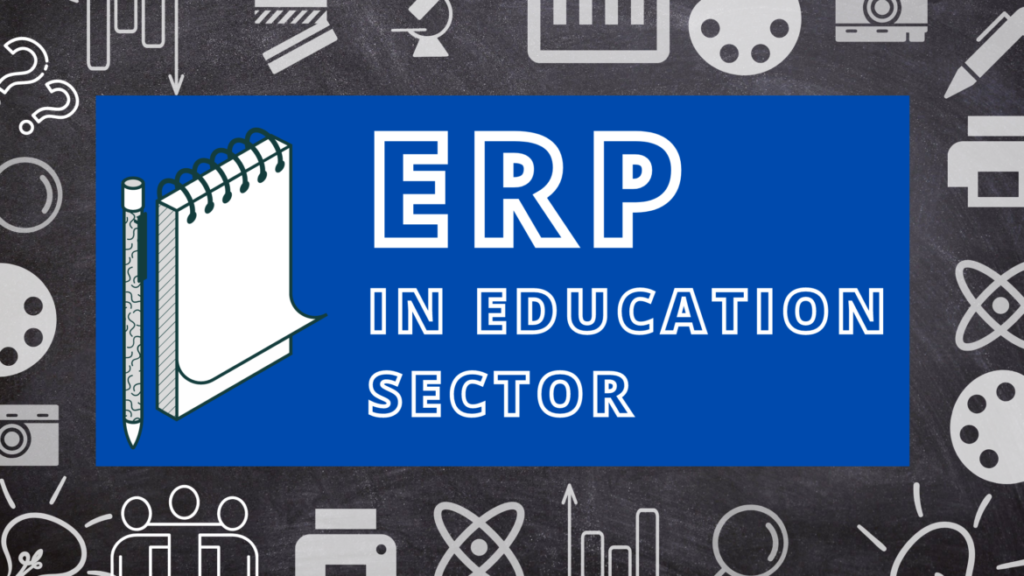What is ERP?

ENTERPRISE RESOURCE PLANNING (ERP) is the integrated software. which look after of the business transactions of different departments in an organization.
You need to have a basic understanding of how business work to understand? How an ERP helps in any business.
Origin of ERP: The term ERP was first used in the 1990s by the Gartner Group, but enterprise resource planning systems actually have their “roots deep in the manufacturing industry”, and can trace their history back to the 1960s. At this time, manufacturers needed a better way to manage, track, and control their inventory.
ERP is the modified Hi-Tech version of MRP (Material Requirements Planning). The term ERP was coined in 1990 and several variations on that classification in the intervening years.
It wasn’t until the 1990s that we first saw proper ERP software entering the arena. This saw the full integration of entire business across one single database in order to create agile adaptations to the demands of the market for the schedules of MRP and MRP II systems.
MRP SOFTWARE: Materials Requirements Planning—MRP—software emerged from a collaboration between IBM and a manufacturer of tractors and construction machinery: J.I Case. The ability to calculate the specifics of business has been a core requirement of businesses around the world over since the days of mercantilism, and modern incarnations of this were no exception.
In its earliest incarnation, this software was only really used by a select few manufacturing companies. These types of businesses were a fertile ground for a system like early MRP software to develop due to the unique requirements of procuring raw materials, producing goods, and moving these products to the final sellers. The limits of computational technology were also keenly felt by many organizations in the 1970s.
The hardware needed to run a complex program like MRP software could often require entire rooms in order to access the same processing power we can access in our smartphones today.
MRP II: The 1980s saw several advances in technology, including the invention of the CD and launch of Nintendo’s Game Boy. For production software, it saw the development of Manufacturing Resource Planning (MRP II) systems.
Origin of ERP: The term ERP was first used in the 1990s by the Gartner Group, but enterprise resource planning systems actually have their “roots deep in the manufacturing industry”, and can trace their history back to the 1960s. At this time, manufacturers needed a better way to manage, track, and control their inventory.
1: MRP II is also can be called as Pre-ERP Software.
2: These systems included the functionality of old MRP systems, but began to integrate overarching coordination between the different departments responsible for the creation of the organization’s end product.
ERP II: An integration with other efficient business software solutions that allows the otherwise slow and ponderous machinery of large businesses to instead strike like lightning when an otherwise unattainable opportunity presents itself.
The History of ERP Companies: The companies that developed these software solutions also played a large role in adding their own personal and historical elements to the development of ERP systems.
While the rise of the SaaS (Software as A Service) model has opened the market to dozens of new vendors, the four oldest listed here have by managed the most influence on the arc of this rapidly growing industry.

SAP: (SYSTEMS, APPLICATIONS & PRODUCTS in data processing) Started by a team of former IBM engineers in Germany, Systems, Applications and Products in Data Processing (SAP for short) was founded in 1972 to provide business software for enterprise-level manufacturers.
They released their first ERP system, R/2, in 1992. However, it wasn’t until the release of the repetition of this software, R/3, that they exploded in their overall market share and quickly rose to prominence as one of the top vendors in the industry, with over 17,000 customers by 1999.
The BAAN Company: A Netherlandish company founded in 1978, BAAN entered the ERP market with the belief that the internet is the “ultimate enabler”, and it is easy to see that philosophy in the approach to their particular software solution.
They are known for their unparalleled cross-functionality amongst a variety of different business aspects and have access to a special tool, Org ware, that helps with implementation costs and has led it to become a leader in the defense and aerospace industries.
JD Edwards & Company: JD Edwards was founded in 1977 in Denver, Colorado, as a supplier for software for the IBM System i.e.; an early mini-computer used by many businesses before the turn of the century.
They launched their ERP system, One World, as a flexible alternative to larger products with a reach into any mid-market organizations. It was acquired by Oracle in 2003 for $1.8 billion.
Oracle: The current industry leader, Oracle is a titan in the ERP space, and for good reason. It is the second largest software company in the world after Microsoft, and has been in the ERP space since 1987.
Their ERP system, Oracle Applications, has one of the most extensive stables of applications and their database management software has served as the basis for other ERP systems, making them both a partner and competitor to these companies.
1: Mobility- An ERP system for supply chain management is essential to unifying disparate systems and removing inefficiencies and bottlenecks common in manual workflows. Enterprise mobility specific to ERP software is known as ERP mobility.

FUTURE OF ERP SYSTEM: With all the new developments happening every year in the tech space, it can be hard to separate and retain through the noise and tell what will stick to a particular industry. For ERP, it seems that the integration of machine learning and artificial intelligence could lead to promising new avenues for users of the software.
These intelligent ERP systems (ERP) can theoretically make use of advanced data analytics in order to lend incredible predictive power to large business operations at a global scare.
BENEFITS OF ERP: It reduces paper work due to online formats for quick exchange of information. It establishes linkage between manufacturer, customer and vendor.
There are so many benefits of ERP, some of them are given below:
- Competition- If you store/ collect information by Manually, it takes so much time but you store information in software it takes no time to find out them.
- Efficiency- No doubt, just click on a single button and get whole information about purchase, advertisement etc.
- Cost Saving- In the beginning it will be costly, but after some time you get cost saving. Like some works done on manually by ten persons, but after using computer it can be done by 2-3 person only.
- Integrated Information- If you want to check any report then you have check one by one report on ledger but by using software (ERP) you can see the entire information at on place.
- Collaboration- It is considered as an important and crucial part of the business when it comes to managing different departments.
- Productivity– When you done your work by using software, it takes less time in comparison to works done by Manually. So, your productivity automatic will be increased.
- Fore Casting – The ERP forecasting module uses a material historical consumption data and the relevant forecasting model predict the demand of material and provide and you the average past consumption quantities to determine a quantity for each consumption period.
- Scalability – In ERP Scalability is the capability of a system to handle an increasing the work and have ability to accommodate growth, scalability is quality in ERP software the future growth by planned operational performance and increasing the productivity.
- Flexibility- ERP software must be able to manage different languages and currencies and accounting standard in one system, manage multiple company’s sites, be implemented, this render flexibility a must have in product.
- Reporting – Balance sheet, income statements and cash flow statements are another category of report and you can prescribed by local account principles and but data is similar world wide.
- Customer Service- customer service can be benefit your business in a variety of ways from enhancing the efficiencies, streamline process to improve the customer service by taking the advantage if automation of ERP, the benefits of to your customer service efforts can be significant: from data isolation errors, timing and more.
- Mobility- An ERP system for supply chain management is essential to unifying disparate systems and removing inefficiencies and bottlenecks common in manual workflows. Enterprise mobility specific to ERP software is known as ERP mobility.

- USE OF ERP: ERP is commonly used by companies working within the supply chain to help keep track of all the moving parts of manufacturing and distribution. However, ERP can be utilized by a number of different industries including those in healthcare, Education, non-profit groups, construction and hospitality.
- ERP in Various Sectors: An ERP can easily help manage the various items used daily in healthcare as well as sourcing and procurement of these items.

Use of ERP in Education Sector: ERP allows an organization to manage its business processes using centralized business database. ERP system contains dashboard connected to a central database that let user look at Real-Time data across different business units. Now-a-days education system are moving towards Cloud Technology, not to advances their process but to run their institute without an error and for security of their students and employees.
Once the education institute shifts towards cloud technology, they get exceptional benefits and the software becomes a kind of school management software. (The school management software is basically a data keeper of students and employees.) the school management software is nothing but the data keeper of students and employees. School management software requires very less time for implementation. The time consumption in implementing a school management software is just a call away to EduRBS Technology.
The software includes a set of tools which modernizes the campus along with upgrading the planning management of processes related to student enrolment, lecture sessions, courses, library, customer care, examination, fee management, transport management, hostel management, etc. Not only about student,
it manages all data about Staff, Teachers, Principal & Admins also.
Simplify Admission Process: It reduce paper work and maintaining data. Admission process by manually is very time consuming. By using software (ERP) it can be done in couple minutes. Information of student’s admission is secured and can be update time to time. No fear of losing data.
Real Time Update: It gives real time update to parents of student when they reach in school and mark their attendance.
Fee Management: It automates fee management. This system is very needful for finance department. Fee collection is another essential process in any educational institute. Before ERP was introduced, managing the process used to be set the administrators. They need to check each and every payment record of all students to find out what fees have been paid and what are outstanding.
An ERP system releases this boring manual task and makes the fee collection without trouble and less tiring. The software automatically segregates the fees collected under various categories and also tracks all the components in the fee structure including amounts paid for tuition, admission, book, lab, etc. to help students stay updated about their fee status.
Manufacturing ER refers software and systems is use to make action plan, manage and deliver specific functionalities that support manufacturer and manufacturing unit. Manufacturing
ERP System are business management platforms that business manufacturers, and distribution use to collect, store, manage and communicate the data all over function of the enterprise.by integrating information from all area of business.
Professional Services ERP, which also goes by name of Professional software Automation software, is purpose to built for business to manage and optimize the lifecycle of from sale to billing it’s more project – driven than traditional product based ERP and provides greater flexibility in features like project management resource management this services firm to able to demanding need of diverse clients
Construction ERP is an enterprise resource planning designed only for construction company, A the construction company should mange the core of business process of construction, including project management, project financials and accounting, project and portfolio analytics resource and asset management.
An ERP platform helps healthcare providers with remote access to key resources and reports for patients. It also helps the patients make informed and timely care decisions. An advanced, automated software makes it easier to schedule future tests and medical procedures.
When a patient trusts a medical professional with his or her care, it’s important that a clean and clear data stream is initiated and maintained throughout the entire interaction. Not only does this help providers protect themselves if an issue occurs, but it also keeps patients as safe as possible.
At the end of the blog, I can say all modules have their own unique quality. Technology going so vast in future and technology will be the main pillar of all enterprises and management, this will also help to gain productivity, manufacturing, and forecasting of business, Educational ERP is not helping only the enterprises, It also help the employee and clients.

